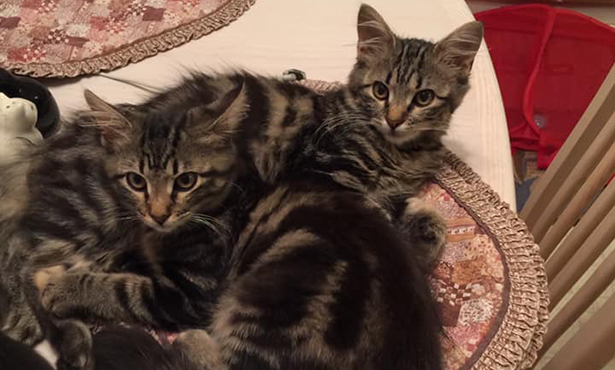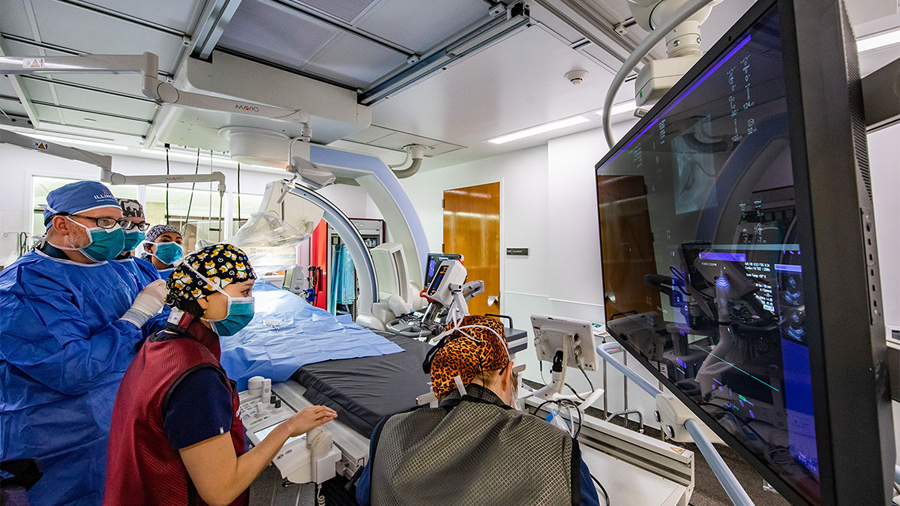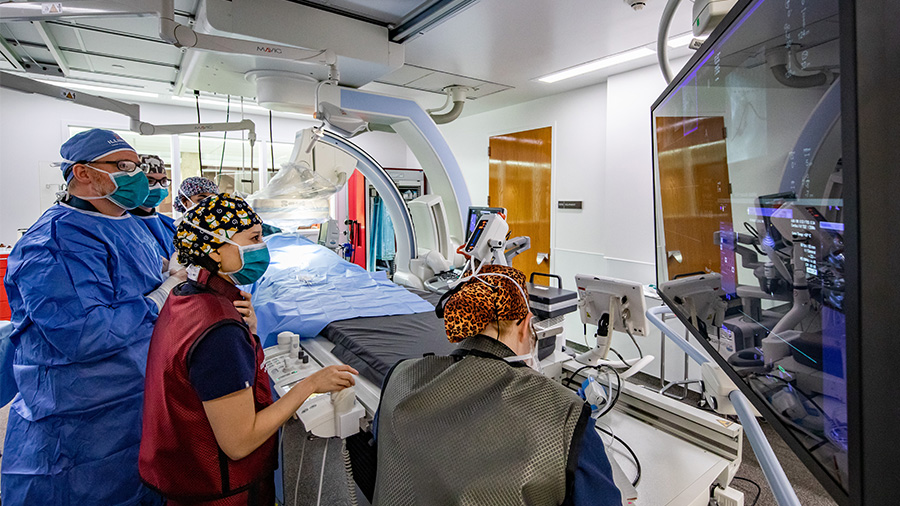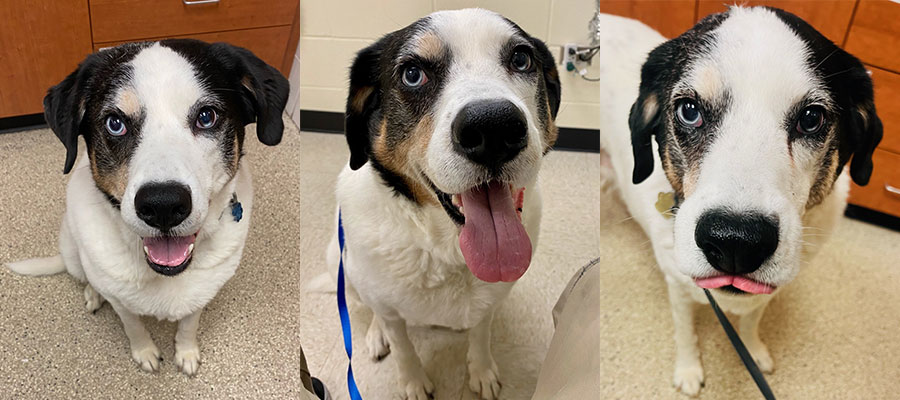Twin sisters, Lucy and Violet, lounge on the Zwicky’s kitchen table.
ILL-INI LOVE LUCY!
Several years ago, two twin kittens appeared abruptly in Elise and Fred Zwicky’s fenced-in backyard. After snacking and playing on the lawn all day it was only a matter of time before the furry friends were invited inside as the Zwicky’s newfound pets, Lucy and Violet.
“I always say they kind of rescued me because we had lost our beloved cat, Zoey, to cancer 10 months before the kittens turned up, so they helped me smile again,” recalls Elise.
Change in Behavior
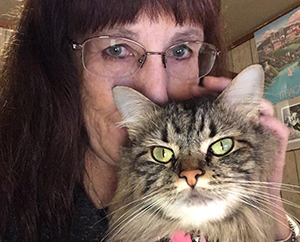
Twins and best friends, Lucy and Violet could always be found in an energetic and playful mood. One April day, however, Lucy began acting lethargic and weak. The Zwicky’s worried for their cat as the symptoms continued. That same week their son, Sean, returned home from his first year of medical school. After conducting an in-home exam on the cat, Sean advised that Lucy visit the emergency veterinarian in their hometown, Peoria. This visit referred Lucy to the University of Illinois Veterinary Teaching Hospital for additional treatment and the Zwicky’s drove to Urbana that same day.
Lucy’s lethargy and weakness were explained when she arrived at the hospital severely anemic with a red blood cell count considered barely compatible with life. Dr. Matthew Hull, small animal internal medicine intern covered Lucy’s case. The cat stayed overnight for a blood transfusion and bone marrow biopsy in an attempt to raise her red blood cell count and discover what else was the matter with Lucy.
“She improved quite a bit after we gave her a blood transfusion,” recalls Dr. Hull, “but we looked at a sample of her bone marrow because we were worried she wasn’t producing any new red blood cells.”
Collaborating for the Cat
With constant tests being run to discover what was wrong with Lucy, the kitty became a regular and a favorite at the hospital. “She had a little fan club going, every time we would go visit her the staff would tell me how much everyone there loved her!” said Elise.
But the family couldn’t be with Lucy all the time. Conscientious of the Zwicky’s long commute from Peoria, Dr. Hull and the veterinary student assigned to Lucy’s case, John Vietti, called the family twice daily with updates on their cat’s health.
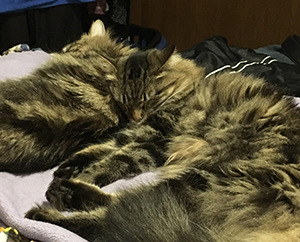
“You could just tell how caring he was. We had a million questions and he would answer each one, and tell us what was going to happen, and just walked us through it all,” recalls Elise
Dr. Hull has also been working closely with Lucy’s primary care veterinarian at Rescued Heart Animal Hospital in Pekin, Ill., regarding blood work and collaborative care.
“We really value our referring vets as a critical member of the team for making healthcare decisions for our patients,” says Dr. Hull, “and they are always welcome to call down and discuss whenever they have questions.”
Bone Marrow Reveals Autoimmune Disease
The doctors at the Veterinary Teaching Hospital finally determined the cat was suffering from primary immune-mediated hemolytic anemia. With full transparency, Dr. Hull explained to Lucy’s family that felines with this disease typically have a poor chance of responding well to the immune suppressant medication that could save their life. The family faced a difficult decision, but Dr. Hull remained hopeful that Lucy’s young age would be advantageous in her successful recovery. The Zwicky’s chose to medicate Lucy and hoped she would respond well to treatment. Thankfully, the strong cat made a remarkable turnaround.
“She really responded beautifully to medications. I would say within two-three months her red blood cell counts were almost completely up to normal,” says Dr. Hull.
Keeping Up with your Pets
“I always say to people, when owners suspect something may be wrong with their pet, no matter how minor it may seem, a simple decision to have it checked out by a vet could wind up saving their life,” emphasizes Dr. Hull.
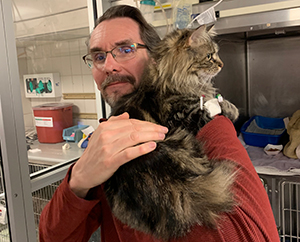
Had the Zwicky’s not been so in tune with Lucy’s behavior and trusted their instinct to bring her to see a doctor, she may not have been saved by the staff at the Veterinary Teaching Hospital. Dr. Hull has since moved to an internal medicine residency at the University of Missouri Veterinary Health Center but continues to keep up with Lucy’s story.
Elise and Fred Zwicky are confident with the plan moving forward and assured about the treatment. “She’s going to get bloodwork in three weeks and we know she’s going to be followed and cared for so we’re feeling optimistic,” says Elise.
“She’s got a remarkably wonderful, loving, supportive family that I think gave her a chance that a lot of people wouldn’t have been able to give her,” says Dr. Hull, “I know they’re extremely grateful, but I know Lucy is extremely grateful and lucky to have her family too.”
By: Stephanie Maurer

